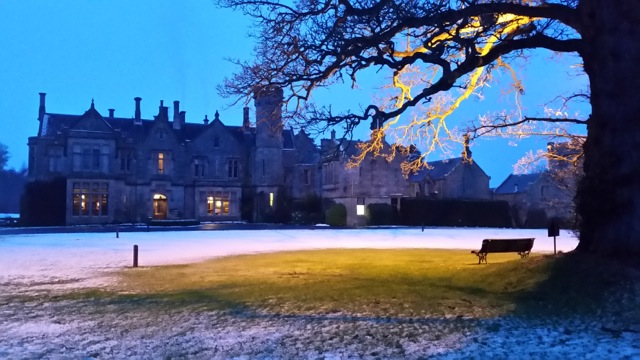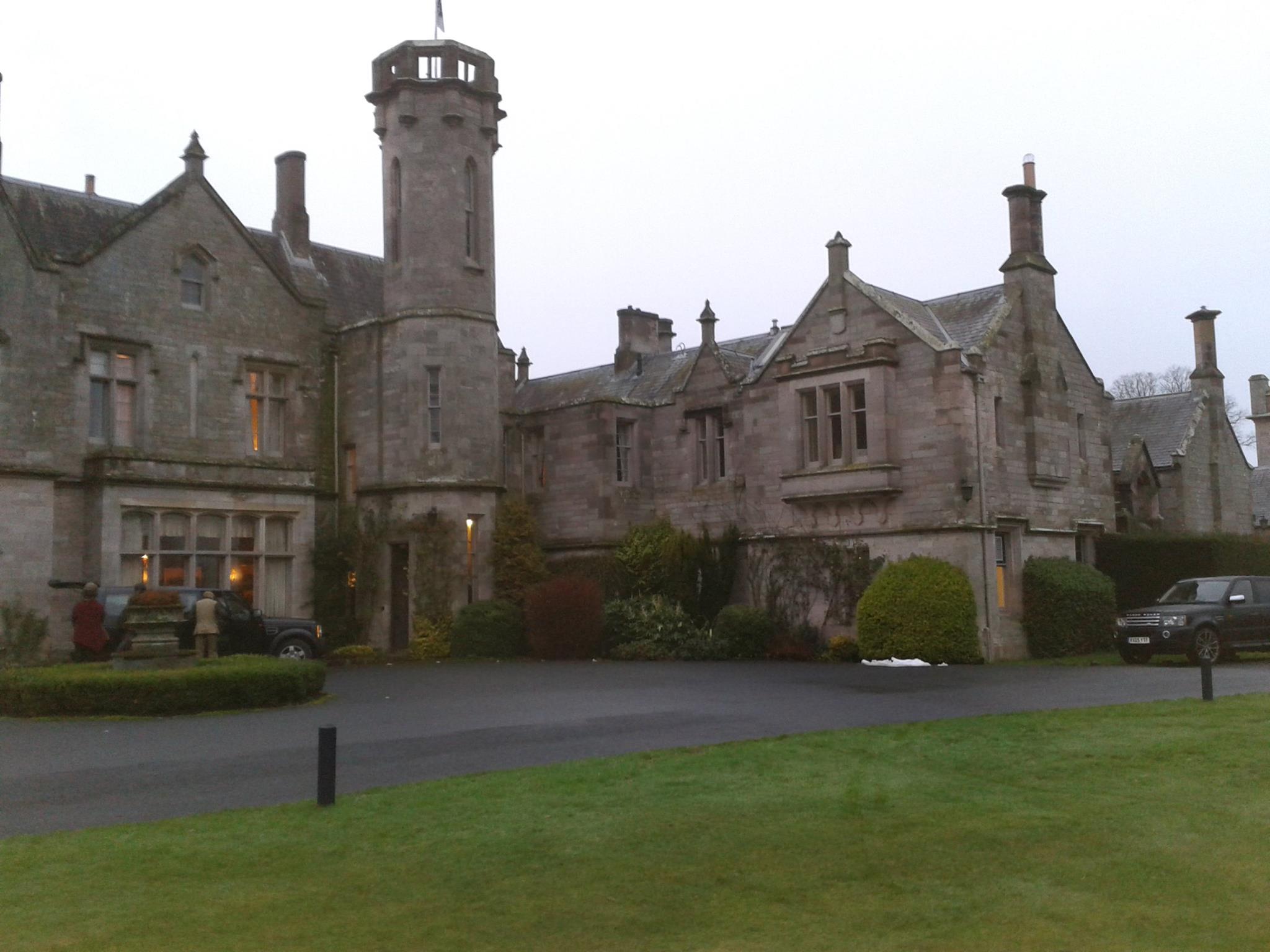Towering Pheasants and Tall Tales
An Adventure in the Heart of the Scottish Borders
By Jen Magnusson
Standing at the base of a tall bluff, with a gurgling stream behind us, we tried to imagine how the birds would appear. When the first lone pheasant materialized, it was just a shadow in the fog pointing skyward and climbing. By the time it reached the gun line, the bird was 55+ yards overhead. Foot forward in classic Standbury fashion, the gun addressed the bird, arched his back, pulling far ahead to accommodate the birds altitude and hoped for the best. Over the next week, we would be tested, time and time again, by the high pheasants and challenging partridge presented by Wilson Young and his team.
The moody January skies provided as dramatic a backdrop to our adventures as the deep valleys and heathered hills of the Scottish Borderlands. Glad for our warm layers of wool and tweed, our team of guns; a doctor, a retired businessman and his charming wife, an entrepreneur, a successful business woman, a contractor, Lars and myself, were hosted by the talented team of WL Sporting, Willie Cole and Louise Granne. We would spend the next four days, three of them shooting, chasing the elusive perfect shot.
“ When the first lone pheasant materialized, it was just a shadow in the fog pointing skyward and climbing. ”
Our first day was on Thirlestane Castle shoot. We pulled on our welly boots in front of the crackling fire in the lobby of the Roxburgh Hotel, a historic stone building with all the elements you would expect from a Scottish castle, including a cozy library bar and attentive staff. Our gear and guns were loaded into the waiting Land Rovers and we were off. Remnants of the fall’s torrential rains were all around us, but as fortune would have it, we missed most of the rain and only faced slight drizzle.
Each drive provided a new style of presentation. Although we were shooting at the end of the season, the birds were numerous and provided all the guns with opportunities to shine. Looking down the gun line, I often watched our fellow guns accomplish what seemed to be impossible shots. Behind us, the dog handlers and their packs of dogs were as diverse as the presentation of birds. It was almost rare to see a Labrador! One gentlemen ran a team of eight dogs, all of different breeds in a variety of colors.
Day two of our adventure was on Bowmont Valley shoot and provided even higher and more challenging shooting. A dusting of snow coated the landscape, and conjured images of our own Idaho environs. Probably the most diverse of the three shoot days, we found ourselves in a variety of landscapes, from sloping hillsides and wooded drainages to wider valleys with meandering streams. Shouts of congratulations for a well shot bird would echo down the line in succession to our hearty laughter that just couldn’t be suppressed on such lovely days afield.
Our evenings were spent around elegant tables at the Roxburgh Hotel, where the tales of the day were only interrupted to place our orders for classic dishes with a slightly French flare. We took the next day to visit “the home of Tweed”, Lovat Mills in Hawick. This famous tweed mill has been in operation since 1882. We toured the mill and poured over ancient ledgers full of tweed “recipes” for some of the countries most famous estates and the custom tweeds that reflect their heritage and landscape. After lunch and a pint at the local pub, we also visited the Kelso Abby, dramatic ruins in the heart of a small village.
“ We toured the mill and poured over ancient ledgers full of tweed “recipes” for some of the countries most famous estates and the custom tweeds that reflect their heritage and landscape. ”
Our third and final shoot day proved to be the most challenging. On one drive, The Quarry, partridges would appear a specks in the sky, rocketing at almost impossible speeds. Every bird that we managed to hit seemed to be a miracle. At the edge of a large moor, the Longcroft Burncastle shoot was a dazzling landscape. Even the clouds broke and gave way to sunshine. As we moved from drive to drive, I couldn’t help but enjoy the rich textures of it all. We closed the day and thanked Mr. Young, the beaters, handlers and gamekeepers for a job well done. That evening, the chef at the Roxburgh prepared some of our harvest, wrapping the pheasant and partridge in bacon and cooking it to perfection.
The next morning, as the bags were packed and prepared, we met at a long table tucked next to the window that overlooked the well kept grounds. Over tea and coffee we recounted a few of our favorite moments and wished each other safe travels home. Sharing these days in the field gave us all new appreciation for a well crafted shoot day, a warm host, great shooting that tested our skill, and the heart of the sporting life that we have all come to love.












